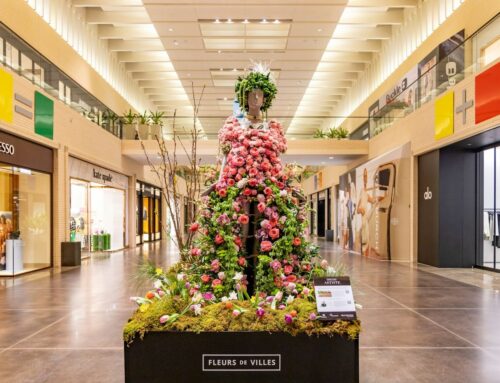For the blind, a celebrity is a name without a face. But the Dallas Lighthouse for the Blind is working to change that through a hands-on art exhibit called In Touch.
In Touch is a collection of lifecasts of famous people. A lifecast is a plaster sculpture of a person’s head created from a mold that renders an exact, three-dimensional impression of the face. The mold is made by wrapping the face in gauze strips treated with a sticky, quick-drying substance designed to capture the emotion of a moment.
“The exhibit is about making art, which is something we think about as visual, accessible to someone who’s lost their vision,” says Erin Bradley with the Lighthouse, a neighborhood non-profit organization that helps blind people become independent.
Ecriselda Scott, a visually impaired volunteer at the Lighthouse, says the display taught her that Whoopi Goldberg has high cheekbones and a flat chin.
“I found out stuff I didn’t know, like that Stevie Wonder had a mustache,” Scott says. “I didn’t know he had a mustache.”
Scott is an albino who can see in dark settings, but her pupils close in bright light, she says. Her husband is completely blind.
Scott tries to describe celebrities to her husband, but she says In Touch has helped her husband more than verbal description can.
“The blind can actually feel a person’s face,” she says. “They get a more detailed idea of what a person looks like.”
Lifecasts are made by artist Willa Shalit, daughter of the Today show’s Gene Shalit. Shalit has been sculpting lifecasts since 1978 and has made more than 1,500 of them.
Dallas’ Lighthouse has 21, including those ex-president Ronald Reagan, political activist Jesse Jackson, former Dallas Cowboy Roger Staubach and singer Carly Simon.
In addition to faces, Shalit has also made lifecasts of boxer Muhammad Ali’s fist and prima ballerina Natalia Makarova’s foot “en pointe”. Both sculptures are at the Lighthouse.
The sculptures help bridge the gap between the blind and the sighted. Those who can see enjoy the exhibit as much as the blind, Bradley says.
“The general public has a tendency to back off when they see someone is blind,” Scott says. “A lot of people are a little bit afraid to help when they see a blind person crossing the street or out shopping.”
“With this exhibit, people can close their eyes and feel the faces. I think it gives them a better idea of what a blind person goes through.”
In Touch is a mobile exhibit the Lighthouse loans to community organizations. The exhibit is offered free of charge for display, but organizations are asked to pay the cost of the art handlers to move the exhibit.
The exhibit can also be seen at the Lighthouse, 4245 Office Parkway, by reservation. Call 821-2375.





